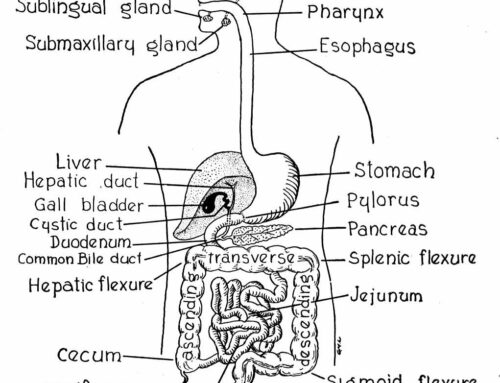Digestion – Introduction
Our tour of the body begins with the digestive system. After all, we are what we eat! What we put into our body provides the fuel our body has to work with in performing all the functions that give us life. Without food there is no life. Without strong digestion there is no useable fuel. What we eat and drink needs to be processed and utilized by the body. Therefore, when I speak of “digestion” remember it is inclusive of breaking down our food, absorbing our food, utilizing our food, and removing the waste products of the food from the body. All of these are critical steps in what we term “digestion.”
Many people suffer from poor digestion (dysbiosis). Do you? How would you know? Well, common signs of poor or compromised digestion include heartburn, belching, burping, gas, bloating, cramping, constipation, diarrhea, nausea, and vomiting. But did you know bad breath, rashes, skin eruptions, acne, allergies, and autoimmune diseases stem from poor digestion as well? When your digestive issues get serious enough for you to see your doctor you may receive an official medical diagnoses such as: Acid reflux, GERD, Crohn’s, irritable bowel syndrome, colitis, diverticulitis, inflammatory bowel, Celiac, and others.
When we have “symptoms” this is our body sending us a message. Something is wrong. Something is not working as designed. Our body has over 120 trillion cells, all of which need to be nourished. Everything we put into our mouth will ultimately have a consequence – either it is nourishing or it is stressful. One definition of nutrition is an act or process of being nourished. It is through digestion that we receive our nourishment.
The next big question is: What creates symptoms? Obviously it is not how our body was originally designed! As my friends at the IFNH (International Foundation for Nutrition and Health) like to say, “Digestion is a north to south process.” It has several stages and what happens at each phase is greatly influenced by the preceding phase. The digestive system includes: mouth, pharynx (throat), esophagus, stomach, small intestine, liver, gall bladder, pancreas, large intestine, rectum, and anal canal. Now we’ll learn what each part does.
Bernard Rosen, PhD is a Nutrition Consultant and Educator. He works with individuals, groups, and at corporations to create individualized nutrition and wellness programs. He has offices in Coeur d’Alene, ID. To learn more or to schedule an appointment, e-mail at bernie@brwellness.com, call (208) 771-6570 or go to www.brwellness.com.







